Is a trip to see lush mountains, animals in the wild, flapping penguins, powdery golden sand, and awesome stretches of coastline in the works? South Africa is a special place that you’ll instantly fall in love with when you go. This is a companion piece to help you plan your own trip as the ultimate South Africa travel tips guide.

Read more about South Africa
- See Cape Town in 1 week
- South Africa safari guide and itinerary
- More South Africa travel guide content
Where to stay in South Africa?
- It’s a big country but if I were to choose my top two favourite places, it’d definitely be Elephant Plains which is truly epic and also the Protea Cape Town Sea Point.
Table of Contents
Jump to the topics that you’re most interested in.
In This Article
The South Africa Travel Tips Guide
The facts
- Electricity – 230 volts, 50Hz
- Currency – South African Rand (ZAR)
- $100 ZAR = $6.84 USD = $9.18 CAD (print a exchange cheat sheet before you go)
- ATMs are relatively easy to find South Africa and there were ATMs I used that did not charge a fee. Nedbank was one of these ATMs.
- SIM card – Nationwide the best overall coverage is Vodacom and second to that is MTN. There is also Cell C and Telkom. I personally went with Vodacom immediately upon arriving in Johannesburg. I fully walk through the prepaid plan I picked including prices. Watch the full video for How to Get A SIM Card In South Africa with Vodacom.
- Alternative data options – Skyroam is an alternative method of data access in South Africa. This is a wifi hotspot that you can share with your travel companions. They offer 24 hour day passes of unlimited data ($9 USD) and also a new GoData monthly plan ($9/month for 1 GB) which I find convenient because I don’t need to go through the hassle of getting a new SIM card and figuring out how local plans work (read my full review of Skyroam).
- Units of measurement – Metric (adopted in 1970).
- Tipping – 10-15% is the customary expectation for tips.
- Language – The main languages spoken are English, Afrikaans, Zulu, and Xhosa.
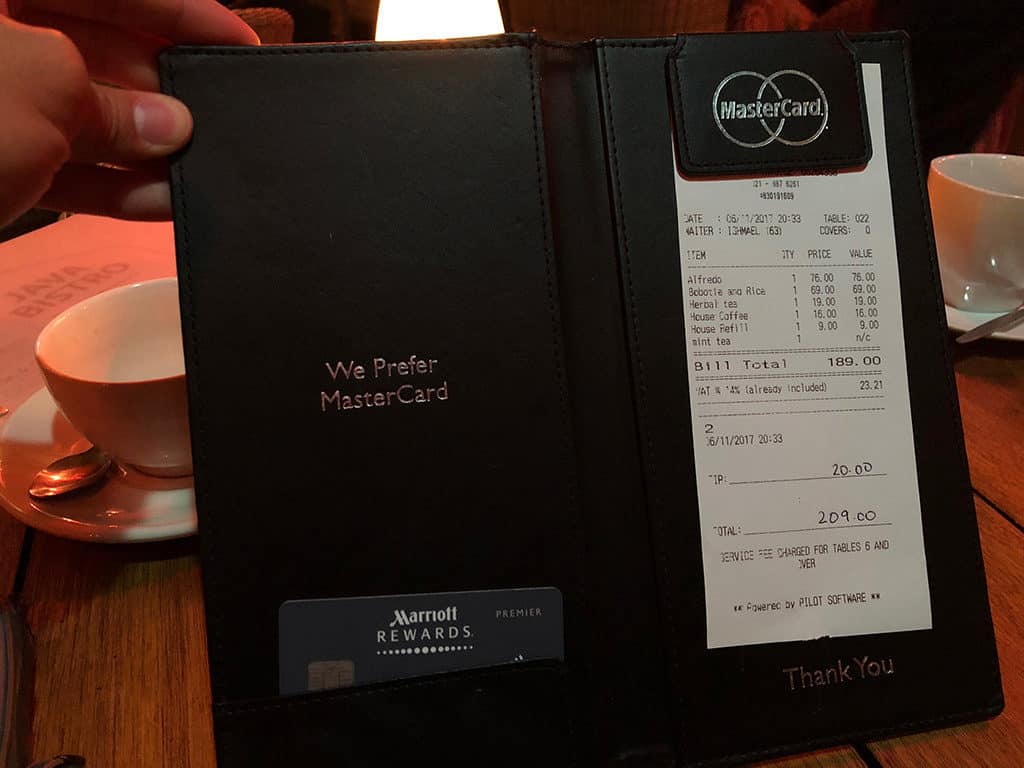
Getting there
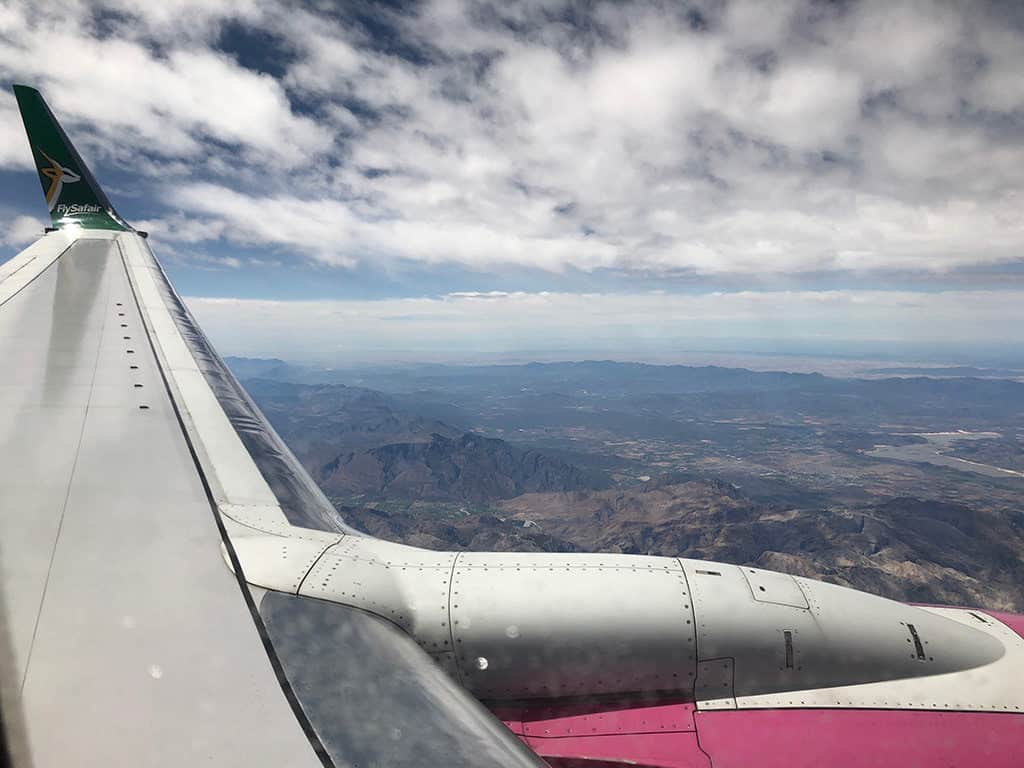
South Africa has 3 main international airports that are strategically located across the country. There’s the OR Tambo International Airport (JNB) that services Johannesburg and Pretoria, King Shaka International Airport (DUR) that serves Durban, and finally Cape Town International Airport (CPT) for Cape Town.
From here, you’re talking about small regional airports that serve more remote areas. One to note is the Nelspruit International Airport (KMI) which many are going to use to fly right into the game parks in Mpumalanga including Kruger National Park.
South Africa’s national carrier is South African Airways that is part of Star Alliance but all the major international airlines from around the world fly there. Even if your own carrier like Air Canada doesn’t fly there, there’s always creative code-shares that are possible as you can see from my use of Aeroplan points to fly to South Africa and Seychelles.
Where things get interesting is when you look at the low cost carriers that have cropped up within the country that will be more useful if you’re looking to fly within the country or other nations in Africa. A few to look at are Safair, Mango, and Kulula.com.
One of the best ways to figure out what airlines operate for the route you’re interested in is by using Skyscanner. Price alerts a re helpful and they also give you indications of whether it’s a good time to buy or not. The Skyscanner mobile app is also super helpful.
Warning: Now this is a serious South Africa travel tip. Be careful with your check-in luggage especially if you’re flying through OR Tambo International Airport in Johannesburg. When flying to Cape Town, our luggage locks were cut off and broken into. From the evidence, they were clearly looking for women’s suitcases as my stuff wasn’t gone through after they broke in but Chantelle’s was completely.
Getting around

You might be surprised to hear that the road infrastructure in South Africa is really good. As long as you’re staying within the major cities and attractions, driving is going to be your best option for getting around in the country. Here’s a breakdown of methods of transportation that you should consider as part of this South Africa travel tips guide.
Car rental
Unless you’re going with a group tour company or planning to rely in taxi’s and day trip excursions, this is the go-to way to get around.
The beauty of South Africa is that car rentals are very affordable and cheaper than most other countries that I’ve travelled to.
The easiest thing to do will be to pick up your rental car from the airport for convenience. In my case, Europcar had insanely good deals in Cape Town and Avis for the SUV we needed to safari in South Africa. The best advice I can give is for you to make your reservations months in advance (the earlier the better) to get better rates because they only go up and the best part is t hat they’re easy to cancel and no deposit is required.
What about insurance? This is based on your personal preference. In Johannesburg, we opted into insurance just because we knew we’d be going off-road and of course heading into Kruger National Park. In Cape Town, we felt pretty confident so we declined insurance.
Warning: When booking our Europcar rental, I used a credit card that I subsequently cancelled. This turned out to be a big issue but luckily they manager gave us an exception. Otherwise, they would’ve forced a new reservation which would’ve been much more expensive.

Tip: You’ll encounter toll roads if you’re driving from Johannesburg which is why cars are equipped with something called eTag. The reason you can drive through all the gates is that it’s enabled by default. This is also where car rental companies charge you extra. You can take the device off if you prefer to pay cash.
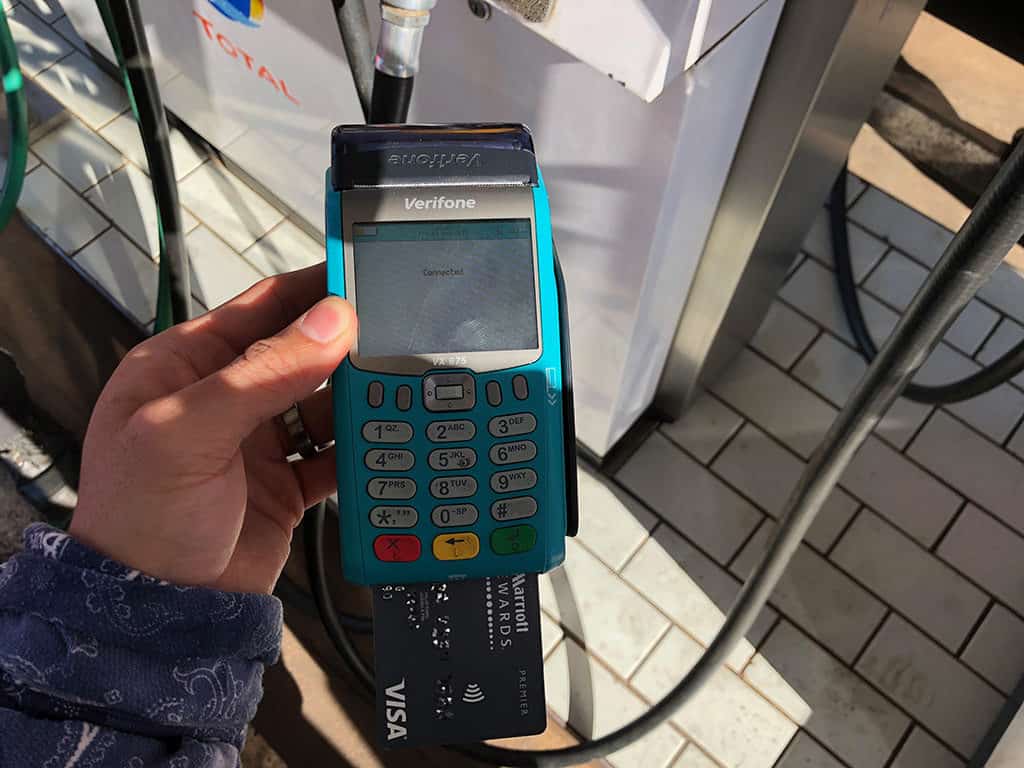
Tip: Car rental companies will charge you for every extra drops of fuel they can put into the tank after returning the car. Unlike in other countries where if the meter shows full, you’re safe. In South Africa, try to fill up the tank as close to the airport as possible before returning.

Pro: It’s the easiest way to get around and when you think about the alternatives, there really aren’t any better ones. Gain ultimate freedom to explore as you please with a rental car.
Con: Depending on where you’re staying, there could be extra parking fees incurred and yes you will have to deal with the pesky parking attendants.
Public Transit
Yes these do exist and there are ways to get around with a car within cities but it’s just not worth it in terms of the complexity to figure out what lines to take, timing and honestly safety, I just wouldn’t risk it.
Pros: Cheapest way to get around.
Cons: Potentially complicated, inconvenient, and unsafe.
Uber
When talking about the major cities such as Johannesburg, Cape Town, and Durban, Uber operates in each of these cities. I’d say that this is the preferred way to get around if you don’t have a car because of the comfort that there’s some accountability within the Uber ecosystem and a guaranteed level of service.
If there’s anything I learned about being scammed in Istanbul is that Uber cuts that BS out of way.
Having taken Uber twice in Cape Town, I can say that it works well just like you’d expect and is the same as everywhere else. However, unlike what I discuss in the New Zealand travel tips guide, there are no booking fees that are added on. Also, Uber drivers are allowed to operate at the airports so that isn’t an issue in South Africa.
There is an alternative app called Bolt that operate in the country and could be useful if you have them set up already.
If it’s your first time taking Uber use code willt1234ue!
Pros: Door to door and guaranteed service
Cons: Can potentially be more expensive than regular taxis.
Flight
This is most relevant for those wanting to do Kruger National Park and the neighbouring private reserves. As I discuss in my Kruger National Park guide for first-timers, the fastest way to get to your safari is to jump from Johannesburg to Nespruit or perhaps even Hoedspruit instead of the 6 hours each way.
Pros: Cut down on driving times
Cons: Can be more expensive and you’ll be restricted to flight times and availability.
We need to talk about some peculiar things in South Africa
Every country does things a little different and when it comes to renting a car in the country, there are 3 things that are need-to-know.
Parking attendants
This is something that always catches visitors off guard. Why are there locals that swarm your car to that try to guide your car into a spot like an aircraft marshall in a perfectly free parking lot? It baffled me at first as well but as I talked to more locals, it’s something that the less fortunate have adopted as a way to provide a “service” of parking guidance and protection.
The tip is completely optional and you can pay either before or after you leave. 5-10 Rands is enough.
As I encountered them at almost every public spot in Cape Town, I learned to accept them as the stress of trying to dodge them and run away just wasn’t worth it.
Full service gas stations
Along the same vain of parking attendants is the completely over the top service you get at gas stations especially if it’s a big highway pitstop as the one we encountered in Middleburg on our way to Kruger National Park.
When you pull in, an entire pit crew comes out and does everything short of a choreographed dance. You’ll get your fill up but also a full clean of your windows. Again, tipping isn’t mandatory but 2-5 Rands is enough.
Another thing that’s good to know is that they do accept credit cards.
Traffic cops
I talk about this extensively in my Kruger National Park guide but what you need to know is that in certain pockets away from the city that highly trafficked by foreigners, the police will try to to extort you into bribing them for any borderline speeding infractions.
Do you research ahead of time and find out which areas you’re driving have these problems. The primary one is the road that connects Johannesburg to Kruger National Park and the private reserves, and the Panorama Route where there are speed traps galore. The only way to combat this is to just drive at the speed limit.
Warning: Highways are 120km/h (75mph) and secondary (rural) roads are 100km/h (60mph). Where they get you though is the significant drop in rural areas in town centers where it immediately goes down to 60km/h (35mph), unless otherwise indicated.
Where to stay
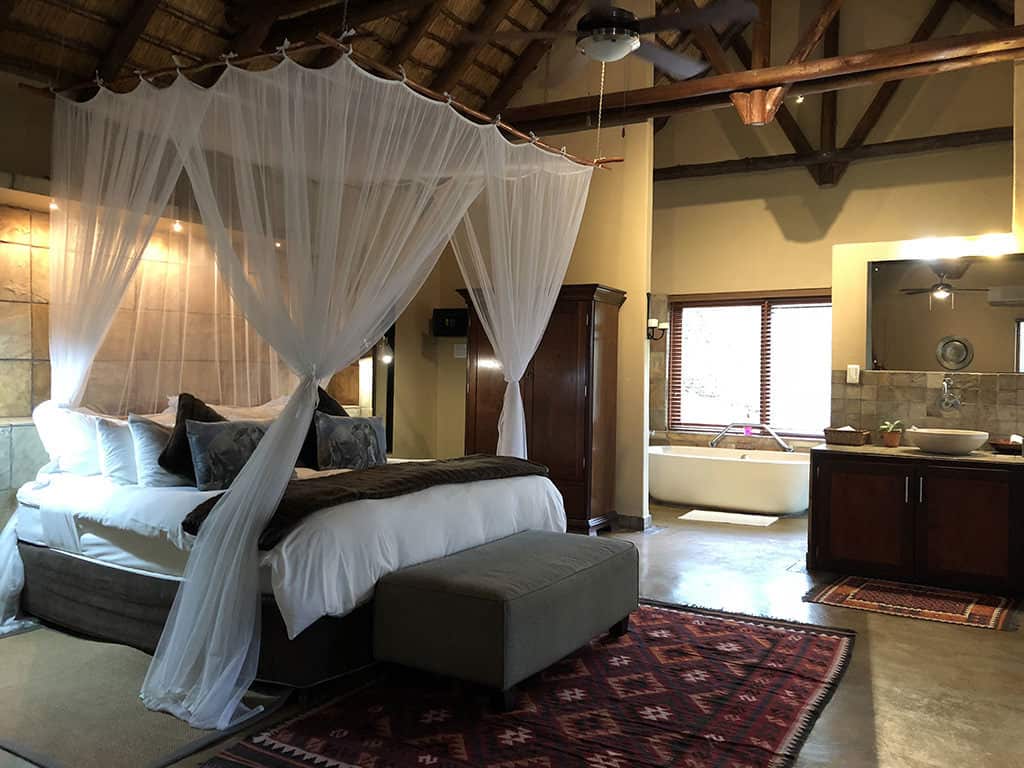
When it comes to places to stay in South Africa, you shouldn’t be surprised that I continue to recommend Booking.com as one that has the largest inventory of properties that span everything from hotels, hostels, guesthomes, and lodges. Here’s a break down of your options.
Hotels
In the big cities, you’ll find your usual assortment of big hotel chains and more boutique properties. These are great options because you can definitely find good deals. Again, Booking is probably your best bet to finding deals and save further money by taking advantage of the $25 Booking.com deal.
Tip: The biggest travel hack I can give you is that in South Africa, there is a brand called Protea that is equivalent to a Courtyard Marriott or SpringHill Suites. What most don’t know is that Protea properties are mostly considered low category (1 or 2) which means that really cheap to redeem on points. Even if you don’t have Marriott points, it’s almost worth it to sign up for an American Express Marriott Bonvoy card to get 61,000 bonus points if you sign up through my link after you charge $3000 in the first 3 months. That’s good for 12 nights redemption during “off-peak”.

An example of a Protea property is the Protea Hotel Dorpshius and Spa in Stellenbosch, and Protea Hotel Cape Town Sea Point which are both Category 1, and the Protea Hotel Kruger Gate which is Category 2.
Hostels
There are a lot of great hostel options in the country that start for as low as $20 USD. I’d say that Cape Town is probably the best for this if you’re looking for cheap accommodations.
Guesthomes
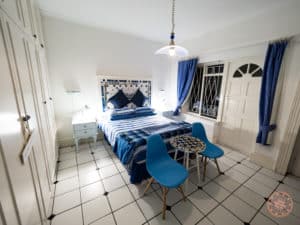
When it comes to B&B’s, and the kind of places that we associate with Airbnb, you’d be surprised with how many are under the Booking.com inventory. That’s how I discovered places like A Heavenly View in Muizenberg which is your typical guest home, run by the lovely Suzette who was extremely accommodating to our schedule. The Aero Guest Lodge is another gem we stayed at upon arriving in Johannesburg.
From personal experience, I can often find better properties than I can on Airbnb on Booking.com. The other big bonus is that Airbnb isn’t that friendly when it comes to cancellation whereas with on Booking, properties with free cancellation make it easy to “hold” a room without feeling like you’ve locked yourself in.
That said, I would still check Airbnb as part of your research to see if there’s anything that you like. Use our referral for up to US$52 in sign-up credit.
Game Lodges and Camping
From here, we’re talking about more safari-based accommodations. Game lodges are essentially traditional accommodations that are located on game reserve or national park lands. If these are located on a private reserve such as Sabi Sands, these are privately owned. Alternatively, there are the lodges and camp huts that you can book with South African National Parks.
If you’re interested in these options, make sure to head over to the South Africa safari planning guide which will have more in-depth information.
We stayed at a private game lodge known as Elephant Plains in Sabi Sands which was the best balance of service, comfort, animal viewing diversity, and price.
When it comes to camping, this is something that’ll be a bit more of a challenge since you’ll need to rent gear but you can certainly do so in a national park or private land.
South Africa geography
South Africa sits at the southern tip of the continent of Africa and is flanked by the Atlantic and Indian Oceans. With 2,798 kilometres of coastline and neighbouring Namibia, Botswana, Zimbabwe, Mozambique, Swaziland, and surrounding Lesotho, this is the world’s 25th largest country 24th most populous. Besides all of those statistics, South Africa is a place that is uniquely diverse because of all of its ethnic groups and massive biodiversity.
With so much land to cover, it probably makes the most sense to touch on the key areas that most visitors come to South Africa for.

With this South Africa travel tips guide, let’s dive into the top highlights. Keep in mind that there is more to see that is considered to be more off-the-beaten-path that isn’t covered in here.
Cape Town

The picturesque and postcard snapshot of Table Mountain’s silhouette is what comes to mind when you think about place dubbed as the Mother City. Every year it seems like Cape Town is always near the top when it comes to the most beautiful cities in the world and there’s good reason for that. With beaches, wine, shark cage diving, hiking, and penguins, it’s unfair the advantage they have.
Kruger National Park

The best way to see the Big Five (lion, buffalo, rhino, elephant, and leopard) is in the perfectly preserved African bush of Kruger National Park. This world-class destination is truly one of the best experiences in the world where you get up close to Africa’s most iconic animals.
Expanding from Kruger, you also have to include all of the private reserve land that border it which provides often provides a more luxurious safari experience where wildlife roam and migrate between freely.
Garden Route

This iconic road stretches along the scenic coast from Mossel Bay and Plettenberg Bay and is arguably the most beautiful drive in South Africa. Covering 200 kilometers, this drive takes you through quant seaside towns, untouched beaches, ancient forests, mountain ranges, sheer gorges, and caverns dot the landscape. Oh and of course, make sure to keep your eyes peeled for whales in Plettenberg Bay.
Durban

This seaside playground is on the Eastern coast of South Africa. With pleasant weather all year round, take your pick of activities that either involve their golden sand beaches, surfing the waters of the Indian Ocean, or scuba diving to see the pristine aquatic life.
Drakensberg Mountains
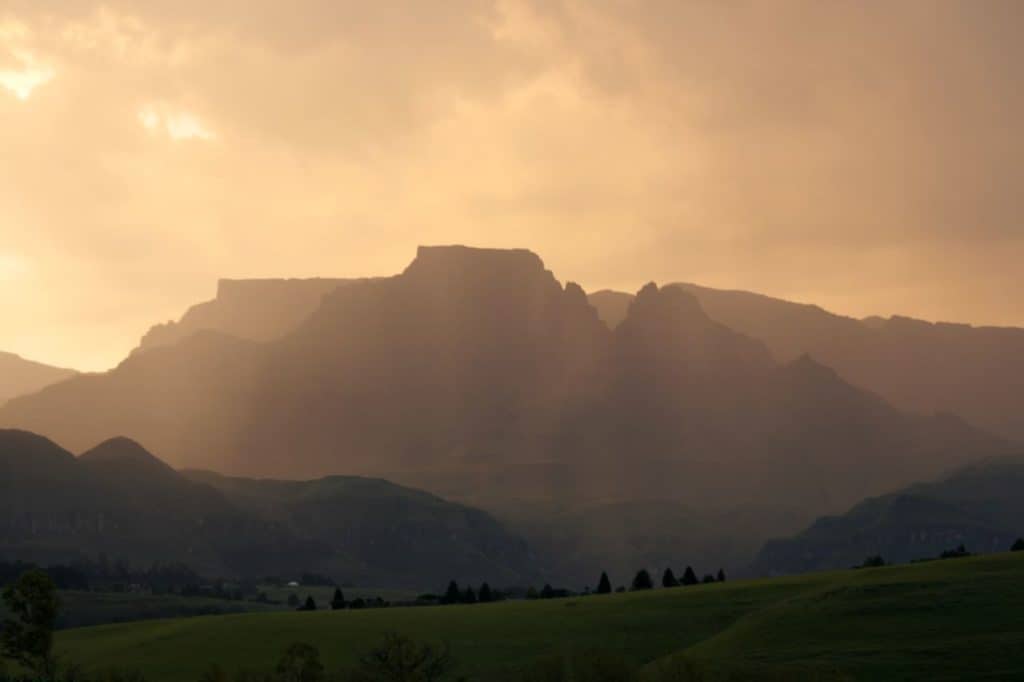
This is South Africa’s tallest mountain range and an adventure to explore. Here you’ll find an endless list of outdoor activities that include rock climbing, hiking, horseback riding, and bird watching. This area is also known for its San Bushmen rock paintings at Giants Castle, another stunning highlight.
Johannesburg

While most will use the city as a hub to get up to Kruger National Park or take a connecting flight to another part of the country, there’s still many reasons to stay in the country’s largest city. This is a progressive city with many neighbourhoods to explore, restaurants to try, walking tours to learn from, and museums to dive into.
What to bring

Looking for a packing list? I got you covered. Prior to leaving for our trip to South Africa and the rest of our honeymoon, I put together a list of all the things I packed in the full South Africa packing list.
With South Africa, you’ll most likely be doing a balanced mix of city exploration, outdoor activities, and safari and with that, my general recommendations still apply with a few additional ones in the mix.
- Pack layers and versatile clothing – From scorching heat, light rain, beach time, and possibly some time under water, you want to be prepared for everything without over-packing. Comfortable, breathable layers are key with 1 or 2 heavier layers like a fleece in case. The safari-looking clothing is actually really comfortable and gives you great sun protection especially when you want a long sleeve to cover your arms.
- Pack light – Remember that you’ll either be hand-washing or doing laundry along the way.
- Zoom lens – If you want to take any serious safari photos, bring a big zoom. For reference my Olympus 40-150mm (80-300mm in full frame equivalent) was just enough reach but even then I wanted more. Think about your gear carefully and then on top of that bring lots of battery and memory.
- Binoculars – If you’re not a photographer, definitely invest in a good pair of binoculars with ideally 20x magnification.
- Animal book and safari book – If you’re going on a safari, one thing that I didn’t expect to be super helpful was this animal book and Kruger National Park guide. This way you know what you’re actually looking at and if you’re so inclined, write down in a notebook your sightings of the day.
- Get a good good credit card without FX markup – In Canada, that’s currently the Scotiabank Passport Vis Infinite.
Best time to go
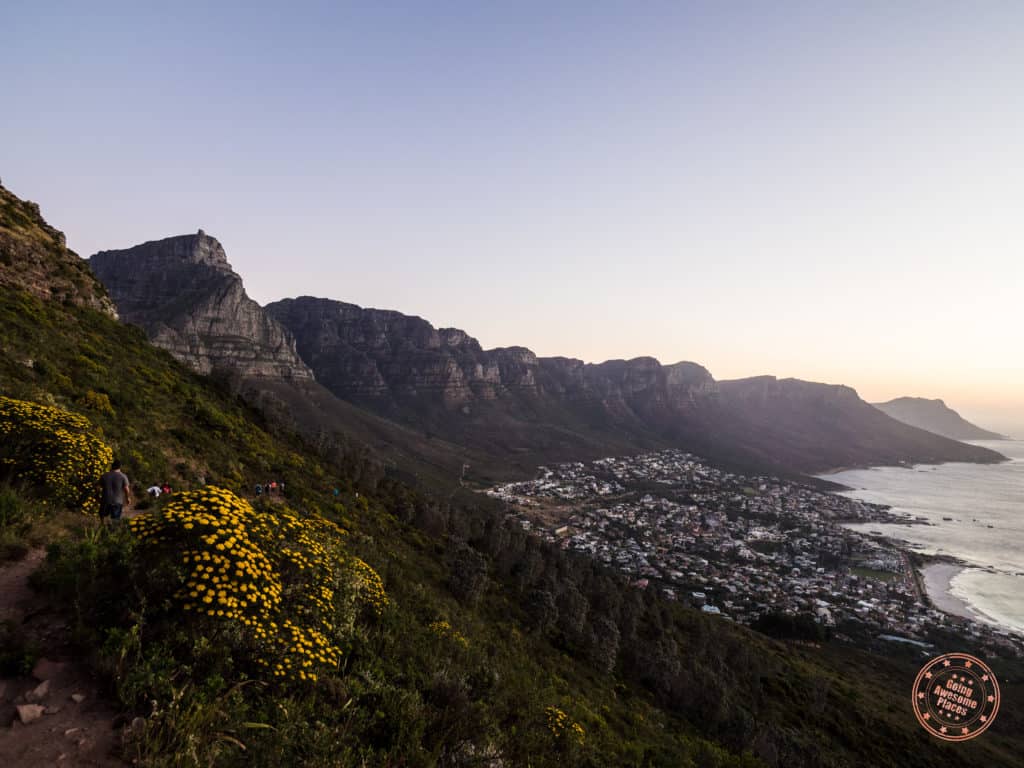
The first thing you have to realize is that yes, South Africa is in the Southern Hemisphere so if you’re coming from the other side, everything will be inverted.
South Africa is unique in that they do have a full 4 seasons however there’s really no singular answer for the “best time to go” that covers the whole country because there’s always something incredible happening. Instead, it actually makes more sense to focus on destinations and activities.
Safari in Kruger National Park
When it comes to wildlife spotting, dry season is the best time of year because the lack of water draws animals towards the watering holes. This concentrates them into more predictable areas and on top of that, this is also when there are less trees on leaves which makes the wildlife easier to spot in the bush as well.
This is between the months of May to October which is technically around the winter months. Since this is the winter, this also means that you get clear and warm days and chilly nights. For areas that are considered malarial, the cold also keeps the mosquitoes at bay which is a nice bonus.
This is a little different though if you’re headed to any of the game reserves near Cape Town. In this part of the Cape, the driest months are actually during the summers between November and March. Keep in mind that this is during high season so you have to plan ahead of time and understand that the prices you’re paying are going to be higher.
Finally, if birding is your thing, you have to flip these rules around because birds and insects come out when it’s wet and the rivers and lakes fill up.
Cape Town
Cape Town is probably the one spot in the country that is good no matter what time of the year it is. That said, the best weather overall has to be the summer months (November to February) are great because that’s the hottest and driest. The scenery is lush and full, the beaches are perfect for suntanning and surfing, and you get endless sunny days.
If you’re worried about crowds and high season, you’re better off coming during more of the shoulder seasons where you can still catch the beginning or tail end of the summer by coming October-November and February-March.
Drakensberg
For the hikers out there, the Drakensberg Mountains is most optimal between April To May in the fall. This is when you don’t have to worry about rain but the weather is still warm and the evenings cool off. The bonus with fall is that because it follows the rainy season, you get lush greens all throughout the range so the views are absolutely gorgeous.
Try to avoid coming here during the extremes of winter and summer because you’re either dealing with really cold temperatures and snow, or heavy rains.
The water-based activities
Humpbacks and southern right whales come to the southern coast for their annual migration to breed near Mozambique. The peak calving season is in July and August but you have pretty good chances to see whales between June to October.
Shark diving is available all year around as we did in Gaansbai but if you’re looking for chances to see tiger shark, it’s best to come when the water is warmer between December to April.
Scuba diving also doesn’t have any specific on or off season. Depending on what you’re looking to catch, that’s the season you should be coming but overall you can dive all year round.
Best timing overall
With all of this in mind, my recommendation coincides with just about every other “best time to go” piece I’ve written which is to go in between seasons. For this South Africa travel tips guide, October to November or March to April give you the best bang for buck where you avoid the high season of summer but still benefit with the lead into or tail end of warmer weather and you roll the dice on whether you get dry or wet weather.
For us, we went in November which turned out to be a little rainy when we first arrived but the rest of our time was pure sunshine. You needed a fleece in the early morning and evening but during the day I was in t-shirt.
How much does a trip to South Africa cost?

Contrary to what you may think about Africa as a whole, South Africa as a country isn’t as cheap as you think it is from a cost of living perspective but at the same time can be relatively affordable if you plan accordingly. It really depends on the types of activities you do and how big you go.
Things are expensive in South Africa because of a number of things. First thing are the flights. For many people, South Africa is not easy to get to and can easily be one of the longest flights you’ll ever take to get somewhere. Secondly, activities like safaris and any sort of organized trip are pricey and considered to be luxury experiences. As an example, 0ur stay at Elephant Plains for 3 nights cost close to $2800 CAD. That was a huge chunk of the expenses. Do an organized tour from start to end and the prices rack up even higher.
That being said, there are definitely ways to do things on the cheap. When it comes to safari, doing your own self-organized Kruger National Park trip can be quite affordable. In our case, we did our own 3 nights in private bungalows and booked game drives and this only came out to $830 CAD. This could be even cheaper if you booked an even more barebones hut. In places like Cape Town, there are plenty of hostels to choose from, and if you pick up something like a Cape Town Pass, you can see a ton in a really economical way. The key at the end of the day is to pick and choose where you want to spend your money, plan it yourself, and not go all-out on everything.
Not including flights, we spent roughly $6700 CAD for our time in Africa which included a week in Cape Town and 9 day safari in Kruger National Park and Sabi Sands. This meant on average, we spent about $418 CAD a day. Keep in mind that $3600 CAD was spent on the safaris alone.
What makes every day expensive
- Private reserve safaris are more of a luxury experience and thus quite expensive
- Accommodations add up
- Activities can get expensive
- Flights to South Africa are not cheap
How to cut costs
- Plan your own trip and avoid the multi-day trip tours
- Rent a car and drive yourself around (use car rental coupon codes)
- Find accommodations that include breakfast or make your own meal
- Spending your points (airline and hotels)
Get the Cape Town Pass
Get up to a 5 day pass to access the city’s top activities and save money doing it. Places such as the Table Mountain Aerial Cableway, Cape Point Natural Reserve, sunset cruise, bike and wine tour, city bus tour, and more are all free with this pass.
A little more about data
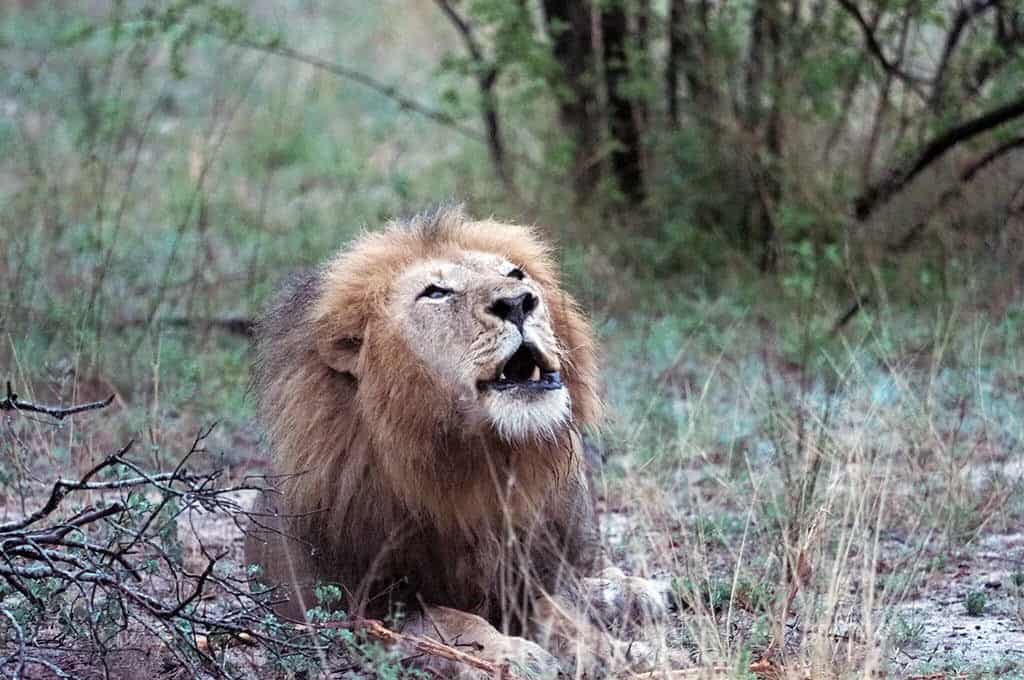
Having good access to data is a big part of travel these days and in South Africa, you’ll want to make sure you’re set for the weeks that you’re there. While I have since converted over to Skyroam as a much easier option, my personal experience in the country is with Vodacom.
Upon landing in Johannesburg, I went straight to the airport’s store to pick up a SIM card and load it up with a data package. Thing is, understanding the data packages was a little more complicated than I had thought.
How Vodacom Works
- SIM Card costs – R105
- Data bundle rates (valid for 30 days)
- 1GB – R149
- 2GB – R249
- 3GB – R299
- 4GB – R399
- 20GB – R999
- Airtime
- This is essentially the money you load onto your SIM for data usage
- However, if your data bundle runs out, it’ll start eating into “Airtime” at a rate of R2 per byte
- Reloading
- You essentially have to go to a convenient store or grocery store to buy reload vouchers. They print you a voucher and you dial the number to add it to your account.
- My Vodacom App
- Something I learned a little late was the My Vodacom App that you can use to check your balance easily and also load money through your credit card without having to buy a voucher.
- Since
Tip: If you’re going to be in South Africa for over 2 weeks, I recommend just going for 4GB. We ran out of 3GB after Day 10. From there, we basically added “airtime” through vouchers or the app and I figured out a way to take advantage of daily data bundles you could opt into.
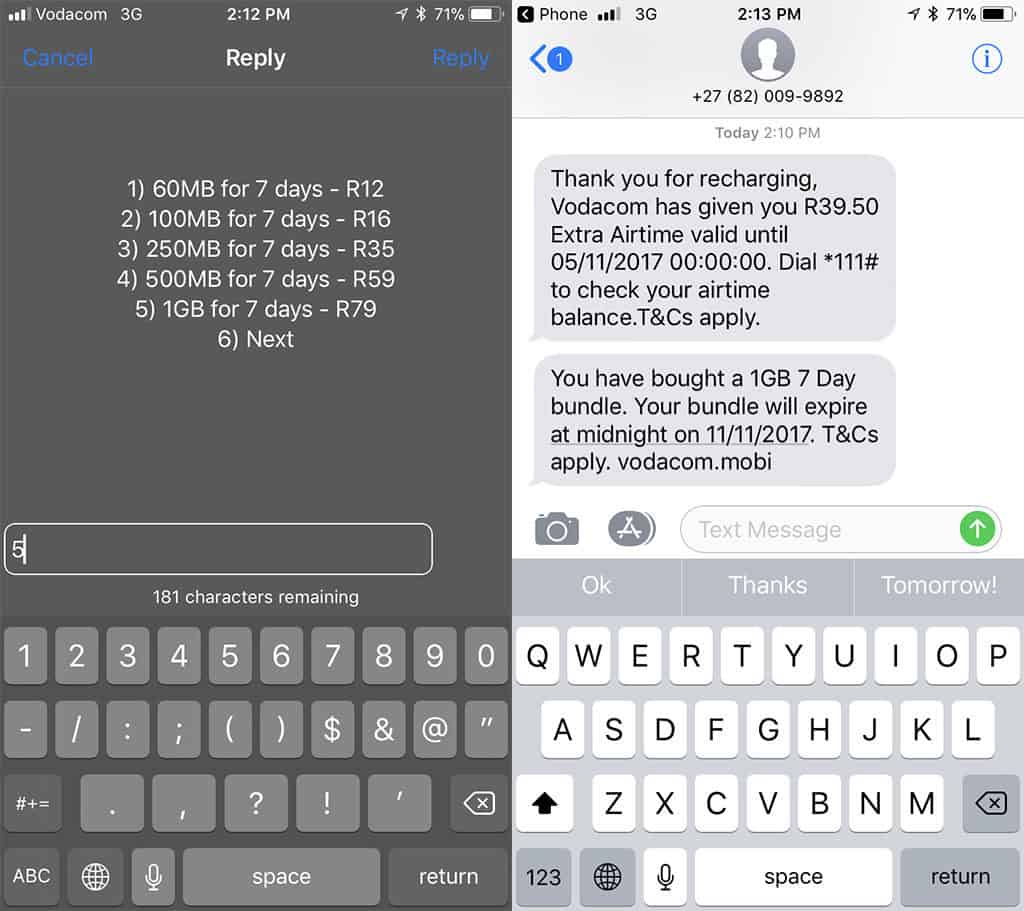
Why is data important? Data is really nice to have when it comes to mapping especially since you’ll be driving for most of your time in South Africa. Looking things up last minute and trying to find the location of places required data and in South Africa, there aren’t many locations that have free wifi. They are out there but I wouldn’t depend on them.
If you’re going to be running without data my recommendation is to leverage Google Map’s offline capability, and do your homework in advance by drop pins on your map app and start your navigation where you have data.
In addition, take screenshots of your digital tickets. I also find using Google Sheets helpful for trip planning since it has offline capability.
Popular tours to consider pre-booking
One of the big South Africa travel tips that I can give is that you definitely want to book and reserve activities ahead of time because they fill up quickly. Safaris in particular require at least 8-10 months of advanced planning and other activities I’d say require 1-2 months of advanced booking.
Here are some of my favourite activities in South Africa.
Shark Cage Diving

South Africa and Gaansbai specifically is one of the easiest and cheapest places to have a serious close (but safe) encounter with great white sharks. This is an incredible experience that should not be missed.
The shark diving experience includes a meal, snacks and drinks on the boat, and post-dive warm up. The nice part is that the boat ride out to the diving site is quite short but just be aware that the rough waters may trigger some sea-sickness.
Read: Full review of shark diving in Gaansbai
This activities fills up quite quickly so I always recommend that you book this way in advance.
Uthando
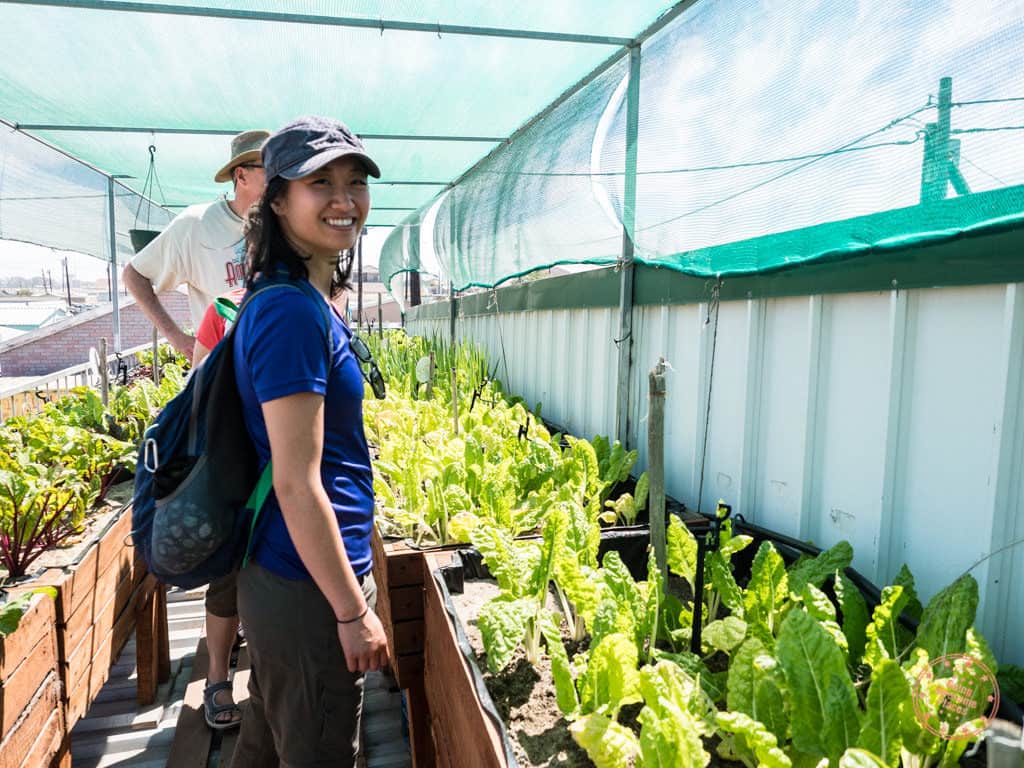
You haven’t seen Cape Town until you’ve been to the local townships. What makes Uthando different from all of the other township experiences is that they are actively involved in the communities that they take you to and you see how their projects are making a real difference.
By going on one of these tours, you’re not only seeing and learning about what life is like in a township, but the money also contributes to the critical work that is happening there through Uthando.
These tours run in small groups so they fill up quickly. Make sure you book in advance to lock a spot.
Robben Island
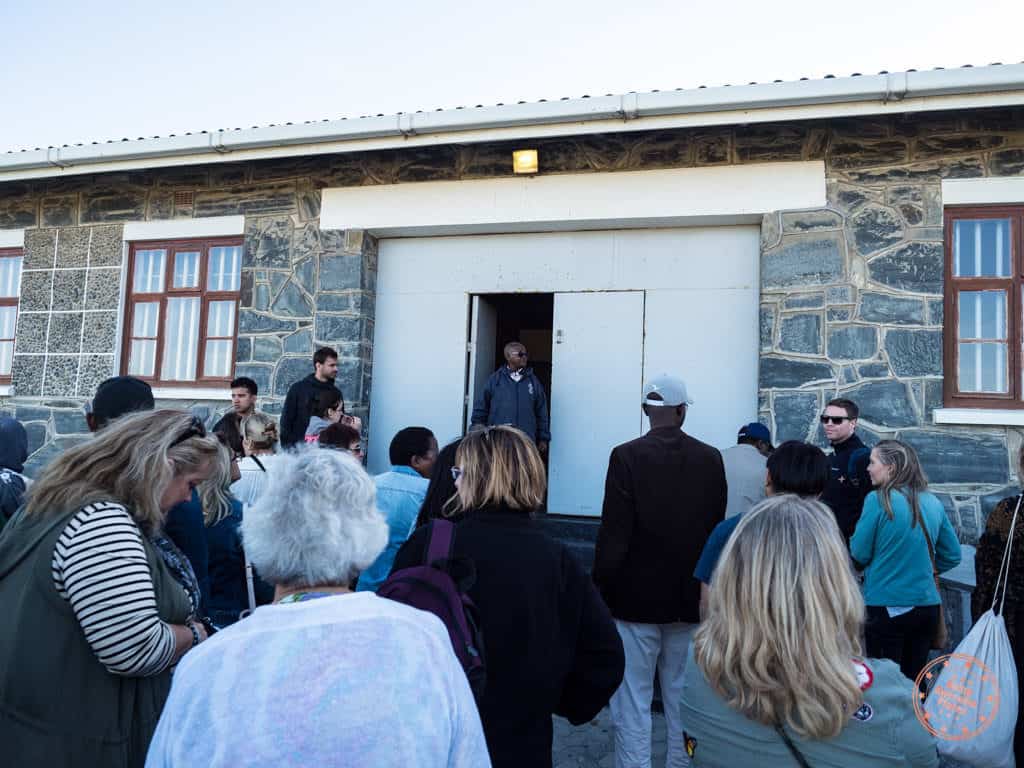
It’d be shame to go to Cape Town and not visit Robben Island to learn about the history of apartheid, how it broke the nation, the people that rose up, and its aftermath. The prison is where Nelson Mandela was incarcerated but beyond that you can also see where other national heroes such as Robert Sobukwe were held.
What makes the experience extra special is that the tour of the prison is given by an ex-inmate who gives a no-BS guide and colour commentary of what they had to go through and their outlook into the future.
If possible, book your Robben Island tour for the afternoon because on your way back on the ferry, you’ll be able to see the sun set over the city. Otherwise, there are special Robben Island tickets that come with hotel pick up that may be convenient. This is another activity that fills up really quickly and won’t be able to drop-in to buy a ticket.
Kruger National Park
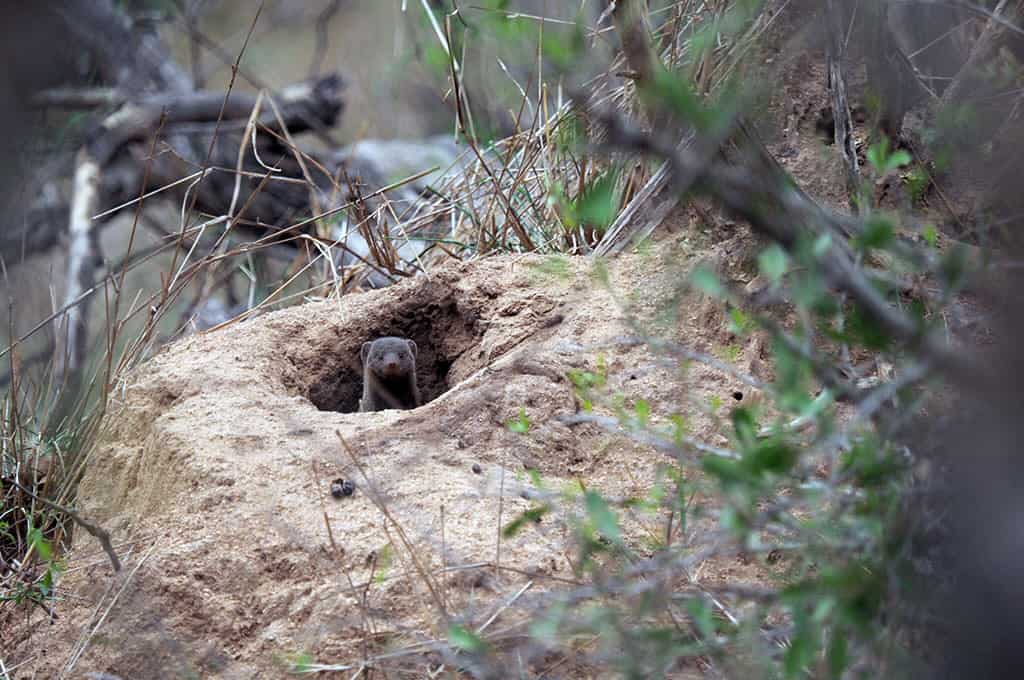
If you’re serious about doing a safari in South Africa, you need to plan and book way in advance when it comes to private game reserves, accommodations within the park, and game drives.
Your best bet is to make your bookings with the South African National Parks service to look for availability and secure those bungalows and activities. I recommend doing this at least 6-8 months in advance.
If you’re a bit late but want to do safaris here, there are alternative companies that run full-day safari’s or half-day safari’s in the park if you’re staying in areas surrounding the park. There are also options such as this 3 day safari from Johannesburg which are
5 main takeaways from South Africa travel tips
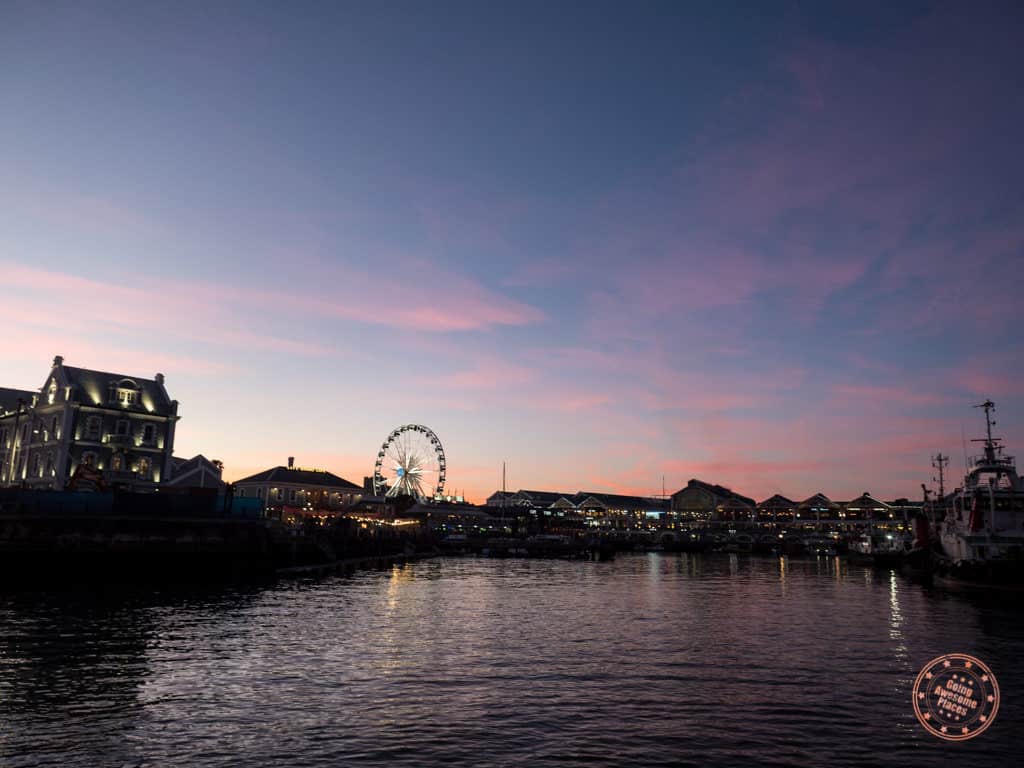
- Stay on top of the cheapest flights to South Africa by using Skyscanner to set up alerts and subscribe to the deals newsletter.
- Don’t get disappointed when a tour fills up – book ahead of time. Check out possible activities in advance on Viator or GetYourGuide.
- Shoulder seasons October to November and March to April are the best times to come to South Africa.
- Get Marriott Bonvoy points by signing up for an AMEX or if you have points already, redeem them for stays at the Protea line of hotels in South Africa.
- When driving your rental car in South Africa, be careful with your speed in areas around Kruger National Park, be cool with parking attendants, and fill up your gas tank fully before returning the car or else they’ll find a way to charge you extra.
Have specific questions about your upcoming trip to South Africa? Drop a comment below!
What you should read next



Sofia Shepherd says
Amazing guide and just what I needed! I’m planning a solo trip to South Africa and your post is really a life saver.
Josie Hanshaw says
Zulu is another language spoken in South Africa
Will Tang says
Yes you’re right! I’ve added that in :)
Ana Katrina Lopez says
Just wanted to say thank you for the tips you shared! I found them really useful. I’m going to forward this to a couple of my friends who will be traveling with me too. I always find it helpful to check out travel tips about a country I am going to visit. The more I know the smoother the trip will be. Well, this all based on my experience of course. I’m looking forward to reading more of your tips for other countries!
Erika says
Thanks for sharing this! We also blog about Africa travels but we kind of took South Africa for granted being so well-travelled compared to other African destinations. We are looking forward to travel Sa more from edge to edge. We have shared what we know best of South Africa in our latest blog. Let me know what you think!
https://whileinafrica.com/african-destination-by-experience/
Will Tang says
Yes I’d love to spend more time in South Africa. Love that you’ve spent time in Ethiopia which is another part of Africa that I’ve been to. Thanks for dropping by!